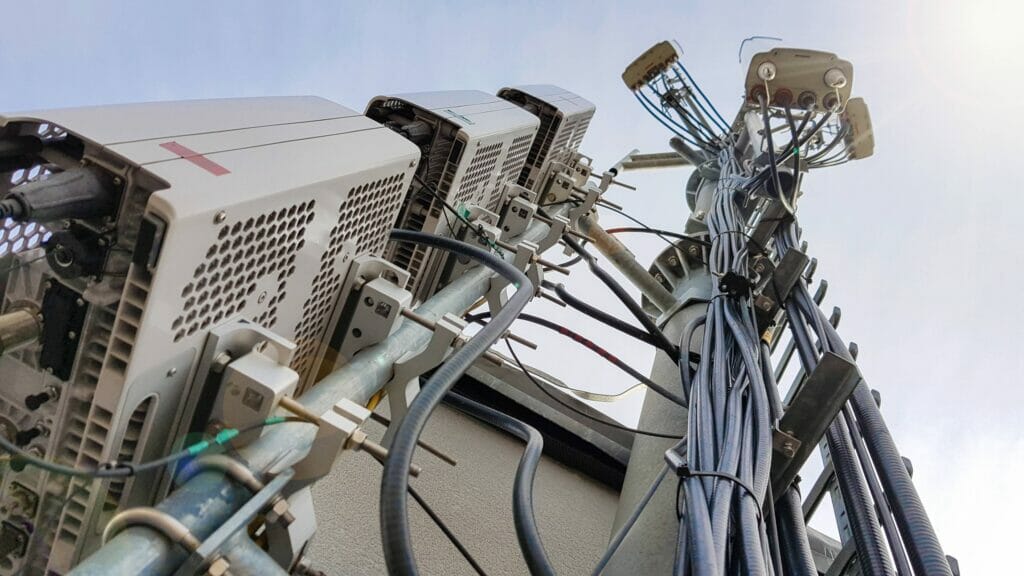Few sectors are more important than telecommunications. Responsible for keeping us connected with people, businesses and public services, keeping telecom services online is essential. But ensuring power to base stations, especially those in rural locations, can be tricky. Here, Andrew Keith, director of load bank manufacturer Power Prove, explains the role telecom batteries play in such scenarios, and the importance of regularly testing them.
 The summer weather can be problematic for our power services. Soaring temperatures can affect heat-sensitive equipment, causing complications with overhead lines and power plants that are unable to cool themselves down. Other extremes like lightning storms can also pose a problem. Back in 2019, two power stations failed just seconds after a major lightning strike in London, leaving almost a million people across England and Wales without power.
The summer weather can be problematic for our power services. Soaring temperatures can affect heat-sensitive equipment, causing complications with overhead lines and power plants that are unable to cool themselves down. Other extremes like lightning storms can also pose a problem. Back in 2019, two power stations failed just seconds after a major lightning strike in London, leaving almost a million people across England and Wales without power.
But with telecommunications being such an important sector, for both our convenience and our safety, it’s vital that power supply is maintained. So, how can we do this, when so much relies on the availability of mains power?
An additional source of power
Space and cost restrictions mean it’s not always possible for mobile base stations and street cabinets to have their own independent generator. Batteries are the most common back-up solution, which are charged up on the mains electricity and can be used in times of outages.
The battery health, therefore, is critical. Taking mobile base stations as an example, each one could be responsible for supplying thousands of homes and residents with connectivity; any loss of service could have serious consequences in an emergency. It’s important to know the exact condition of each battery within the network to identify whether it’s still fit for use or if it needs replacing.
But how do you determine battery health? While batteries degrade naturally over time, those that work in areas that frequently experience outages will likely degrade faster than those that don’t. This happens as a result of the partial discharging and recharging that happens with frequent outages, which affects battery condition when done repeatedly. And when it comes to testing, static measurements of battery performance don’t always give a complete picture of its health or capacity.
Testing with load banks
Load banks can provide the solution. A load bank is a piece of electrical test equipment, which can simulate electrical loads to test an electric power source. Often used to verify the performance of generators, they can also be used to verify battery health with a simple discharge test. By completely discharging the battery, the load bank can explicitly identify its health and condition.
While load banks for generator testing are often heavy and cumbersome to transport, there are much more convenient solutions available for telecom battery testing. Power Prove offers a range of portable DC load banks, ideal for testing across multiple sites. And for higher-power batteries, load banks on wheels are available to ensure portability while allowing access to higher voltages.
While the summer weather brings joy to many of us, it can be tough on our energy supply. But for industries where power is critical, and individual generators aren’t feasible, there are solutions available. Regularly testing backup power supplies helps guarantee that our essential services are there when we need them.
About Power Prove:
Power Prove is an experienced team of engineers and manufacturing experts delivering the latest in load bank technology. We are a division of Cressall Resistors Ltd. based in the midlands of England. For over 100 years Cressall Resistors have been manufacturing resistors and load banks within the UK.
Power Prove provides customers with an extensive range of load bank designs, competitive lead times and pricing, enhanced features, power measurement, data logging, remote control and multi-load bank networking, comprehensive support and product documentation.






